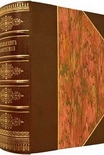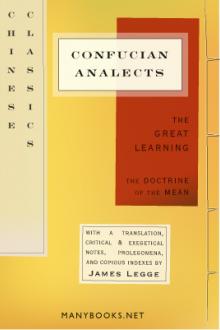Myths and Legends of China by E. Werner (free ebook reader for iphone TXT) 📗

- Author: E. Werner
Book online «Myths and Legends of China by E. Werner (free ebook reader for iphone TXT) 📗». Author E. Werner
Confusion of Shang Ti and T’ien
The qualification necessary to the above description is that, as time went on and especially since the Sung dynasty (A.D. 960–1280), much confusion arose regarding Shang Ti and T’ien, and thus it came about that the terms became mixed and their definitions obscure. This confusion of ideas has prevailed down to the present time. One result of this is that the people may sometimes state, when they wave their incense-sticks or light their candles, that their humble sacrifice is made to Shang Ti, whom in reality they have no right either to worship or to offer sacrifice to, but whom they may unofficially pay respect and make obeisance to, as they might and did to the emperor behind the high boards on the roadsides which shielded him from their view as he was borne along in his elaborate procession on the few occasions when he came forth from the imperial city.
Thus we find that, while only the emperor could worship and sacrifice to Shang Ti, and only he could officially worship and sacrifice to T’ien, the people who early personified and worshipped T’ien, as already shown, came, owing to confusion of the meanings of Shang Ti and T’ien, unofficially to ‘worship’ both, but only in the sense and to the extent indicated, and to offer ‘sacrifices’ to both, also only in the sense and to the extent indicated. But for these qualifications, the statement that the Chinese worship and sacrifice to Shang Ti and T’ien would be apt to convey an incorrect idea. Page 97
From this it will be apparent that Shang Ti, the Supreme Ruler on High, and T’ien, Heaven (later personified), do not mean ‘God’ in the sense that the word is used in the Christian religion. To state that they do, as so many writers on China have done, without pointing out the essential differences, is misleading. That Chinese religion was or is “a monotheistic worship of God” is further disproved by the fact that Shang Ti and T’ien do not appear in the list of the popular pantheon at all, though all the other gods are there represented. Neither Shang Ti nor T’ien mean the God of Abraham, Isaac, and Jacob, or the Father, Son, and Holy Ghost of the New Testament. Did they mean this, the efforts of the Christian missionaries to convert the Chinese would be largely superfluous. The Christian religion, even the Holy Trinity, is a monotheism. That the Chinese religion (even though a summary of extracts from the majority of foreign books on China might point to its being so) is not a monotheism, but a polytheism or even a pantheism (as long as that term is taken in the sense of universal deification and not in that of one spiritual being immanent in all things), the rest of this chapter will abundantly prove.
There have been three periods in which gods have been created in unusually large numbers: that of the mythical emperor Hsien Yüan (2698–2598 B.C.), that of Chiang Tzŭ-ya (in the twelfth century B.C.), and that of the first emperor of the Ming dynasty (in the fourteenth century A.D.).
The Otherworld Similar to this World
The similarity of the Otherworld to this world above alluded to is well shown by Du Bose in his Dragon, Image, and, Demon, from which I quote the following passages: Page 98
“The world of spirits is an exact counterpart of the Chinese Empire, or, as has been remarked, it is ‘China ploughed under’; this is the world of light; put out the lights and you have Tartarus. China has eighteen [now twenty-two] provinces, so has Hades; each province has eight or nine prefects, or departments; so each province in Hades has eight or nine departments; every prefect or department averages ten counties, so every department in Hades has ten counties. In Soochow the Governor, the provincial Treasurer, the Criminal Judge, the Intendant of Circuit, the Prefect or Departmental Governor, and the three District Magistrates or County Governors each have temples with their apotheoses in the other world. Not only these, but every yamên secretary, runner, executioner, policeman, and constable has his counterpart in the land of darkness. The market-towns have also mandarins of lesser rank in charge, besides a host of revenue collectors, the bureau of government works and other departments, with several hundred thousand officials, who all rank as gods beyond the grave. These deities are civilians; the military having a similar gradation for the armies of Hades, whose captains are gods, and whose battalions are devils.
“The framers of this wonderful scheme for the spirits of the dead, having no higher standard, transferred to the authorities of that world the etiquette, tastes, and venality of their correlate officials in the Chinese Government, thus making it necessary to use similar means to appease the one which are found necessary to move the other. All the State gods have their assistants, attendants, door-keepers, runners, horses, horsemen, detectives, and executioners, corresponding in every particular to those of Chinese officials of the same rank.” (Pp. 358–359.) Page 99
This likeness explains also why the hierarchy of beings in the Otherworld concerns itself not only with the affairs of the Otherworld, but with those of this world as well. So faithful is the likeness that we find the gods (the term is used in this chapter to include goddesses, who are, however, relatively few) subjected to many of the rules and conditions existing on this earth. Not only do they, as already shown, differ in rank, but they hold levées and audiences and may be promoted for distinguished services, just as the Chinese officials are. They “may rise from an humble position to one near the Pearly Emperor, who gives them the reward of merit for ruling well the affairs of men. The correlative deities of the mandarins





Comments (0)